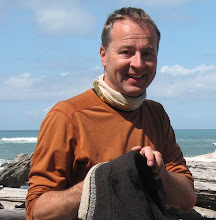Two speakers with real world examples on the role of groundwater in today's world of drought preparedness followed Scott Stine's talk in a session on managing drought, held at this year's Biennial Groundwater Conference. Dr. Behrooz Mortazavi, Eastern Municipal Water District (EMWD), and Gary Serrato, Fresno Irrigation District, explained the many elements of their respective district's conjunctive use management approaches.
EMWD receives nearly half of its water from the State Water Project (drought!!), one quarter from the Colorado River (more drought!!), 13% from groundwater, 2% from desalination, and almost 20% through recycling. For anyone interested in seeing the many elements of water management and particularly of groundwater and conjunctive use management applied and systematically integrated into a single framework - this is a story not to be missed (which is why have very much enjoyed Behrooz' presentations at our introductory Groundwater & Watershed Hydrology shortcourses in Southern California).
EMWD has it all: high TDS (brackish) groundwater, low TDS groundwater, expanding urban areas, agriculture and animal farming, drought, large dependence on imported water, a complex array of groundwater basins with interconnected groundwater flow, local groundwater overdraft, cities, private landowners, federally reserved water rights associated with tribal lands, urban groundwater contamination, nonpoint source contamination of groundwater... for just about any issue from a Groundwater (management) textbook, there is a real world example to be found in EMWD.
Working for decades with a diverse group of stakeholders and partners within its service area, EMWD has implemented a wide array of groundwater management measures: extraction monitoring, water quality monitoring, a well abandonment program, water recharge projects, tertiary treatment of municipal waste water for recycling as irrigation water in lieu of groundwater, a desalination project to manage its brackish groundwater, close cooperation with its tribal partner. Listening to Behrooz, this seems like a textbook example of groundwater management and drought preparedness - why wouldn't everyone do it this way? Behrooz is not shy pointing out the decades of work it took to bring the district where it is today - through extensive stakeholder participation, negotiation, and education. (Behrooz' presentation can be found here).
Gary Serrato manages the Fresno Irrigation District (FID), which receives most of its surface water from the Kings River and is part of the Kings River Conservation District, supplemented with water from the San Joaquin River through the Central Valley Project (CVP, Friant-Kern Unit). The district overlies a large groundwater basin, part of the Central Valley aquifer system. Joint use of groundwater and surface water has been practiced in FID nearly from its beginnings, I suspect long before the term "conjunctive use" became popular. FID includes a varied agricultural landscape - citrus orchards in the far eastern portion, tree orchards and vineyards throughout much of the central part, and cotton and other field crops further west. The cities of Fresno and Clovis and several smaller communities are also part of FID and receive a significant amount of water from FID. For over four decades, the City of Fresno and Clovis have used surface water to recharge their (overdrafted) groundwater (e.g., "Leaky Acres" facility, numerous recharge basins located throughout the city for intentional recharge). Their treated wastewater has also been used to recharge groundwater for many decades.
New to FID's portfolio is the Waldron Groundwater Banking facility near their south western boundaries. While Leaky Acres is in the middle of the City of Fresno's own groundwater cone of depression (recharge directly into the groundwater use area), Waldron is intentionally designed for banking purposes, with water users not necessarily overlying the bank (see Gary's presentation).
Agriculture has played a significant role in FID's historic and often unintentional conjunctive use program - recharge from irrigation, particularly in wet years, recharge from recharge basins scattered throughout the Kings River basin, which are filled in the spring for groundwater recharge, and groundwater use during drought periods have been a traditional and intrinsic part of water operations in FID. What I have found most interesting about this for the many years I have known Fresno County: Unlike the recent conjunctive use schemes that I know from Arizona and Southern California, which have been well-studied designs associated with intensive hydro(geo)logic and water quality studies prior to build-out, much of FID's and KRCD's conjunctive use program have been around for half a century or more - for as long as Pine Flat Dam (on the Kings River) and Millerton Lake (on the San Joaquin River) have been around; Until recently, they have been driven by large scale, intuitive design at the surface water management level, without any guidance from detailed groundwater basin studies or modeling efforts.
This has recently changed, with "business as usual" in groundwater management quickly disappearing throughout California. Given the history of water and groundwater use, the politics in Fresno County are not any easier than in EMWD's service area. No less than 28 agencies have recently come together to develop an Integrated Regional Water Management Plan. Much of the water management issues and (ground)water use history is - perhaps for the first time - extensively described in the associated documents generated by the IRWMP, including an extensive groundwater modeling study.
4 days ago


No comments:
Post a Comment